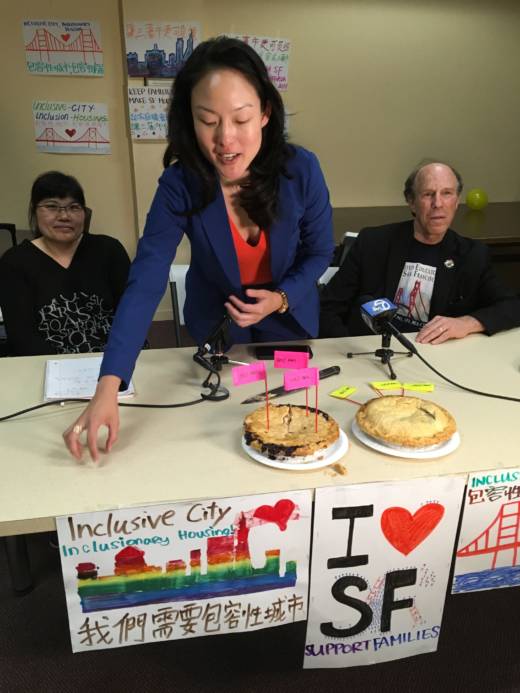Kim told a group of low-income renters at a press conference on Thursday that the compromise is a win. She said she fought for an aggressive increased schedule for the requirement, and to keep the requirement higher in neighborhoods that are particularly vulnerable to gentrification.
"We know that market-rate developers can and should contribute more housing to our working-class and our middle-class families," Kim said. "And we are really proud that we were able to accomplish that in today's deal."
Under the agreement, the affordability requirement for rentals will rise to 19 percent at the beginning of 2018, and will increase each year until it reaches 24 percent in 2027. Initially, 10 percent of units will be designated for low-income earners, 4 percent for moderate-income earners and another 4 percent for middle-class residents.
The requirement will remain at 25 percent affordable in the Mission and Tenderloin neighborhoods, where gentrification has been particularly intense.
Affordability requirements will also be higher for buildings that are for sale rather than rentals, and for developers who opt to build affordable units off-site.
Ken Tray of the United Educators of San Francisco, which has advocated for both low- and middle-income housing, said the deal will help keep educators in the communities where they work.
“We range from people in the $30,000 range, all the way up to old people like me who spent their careers here, now pushing $90,000,” Tray said. “So most of our folks are covered by this agreement.”
Gen Fujioka of the Chinatown Community Development Center said the Breed-Safai bill would have reduced the percentage of low-income units too dramatically at a time when federal funding for subsidized housing is likely to be cut. He said the compromise will help slow the exodus of blue-collar workers out of San Francisco.
But Laura Clark of the housing advocacy group YIMBY Action said requiring developers to designate a certain percentage of units as affordable is not an adequate solution to the housing crisis.
“It’s just a drop in the bucket, compared to the need,” Clark said.
The proposal is expected to go before the Land Use and Transportation Committee and then to the full Board of Supervisors early next week.


